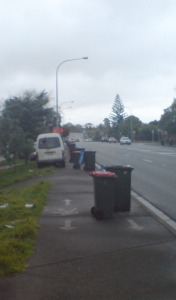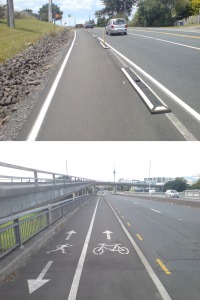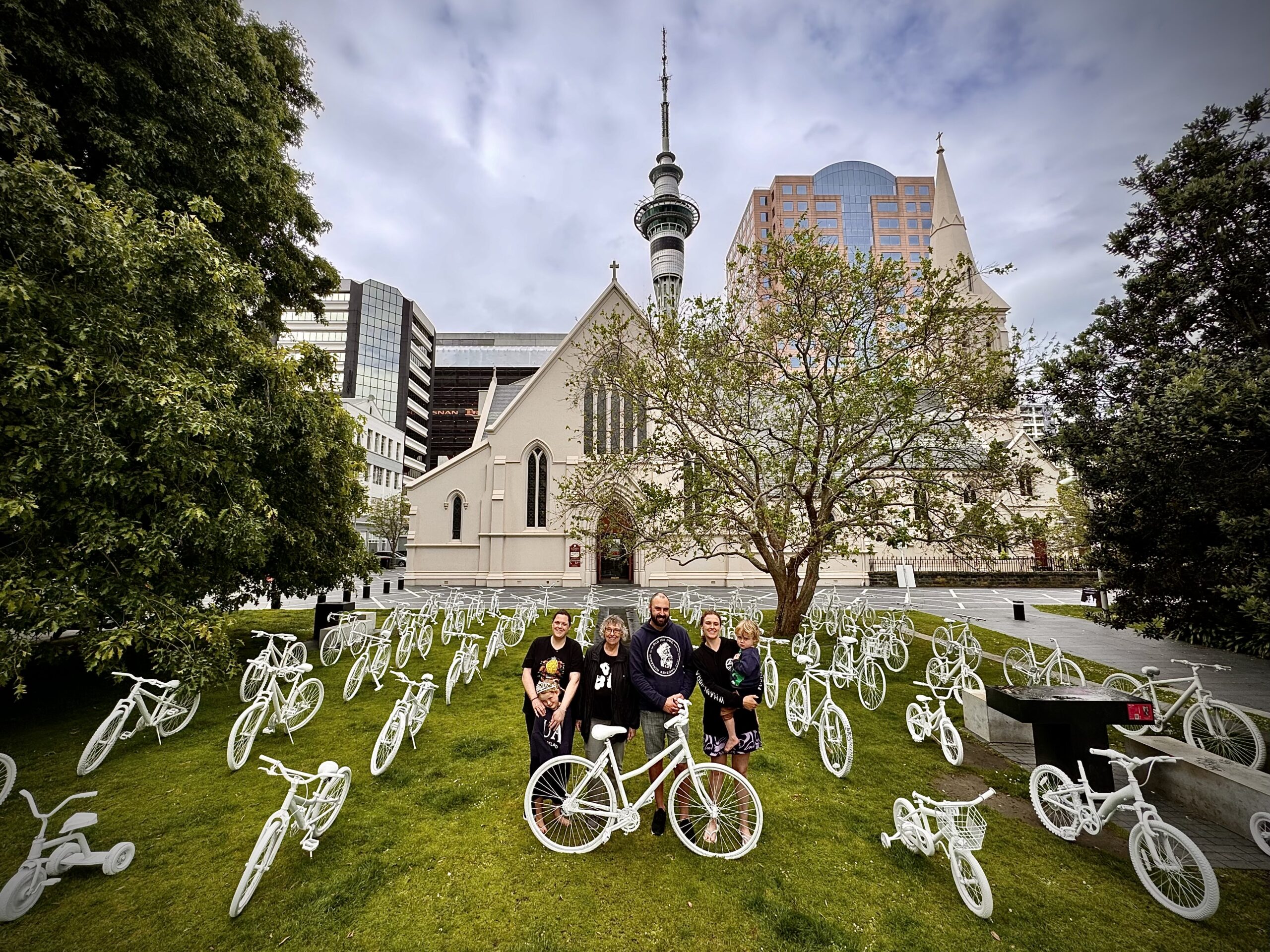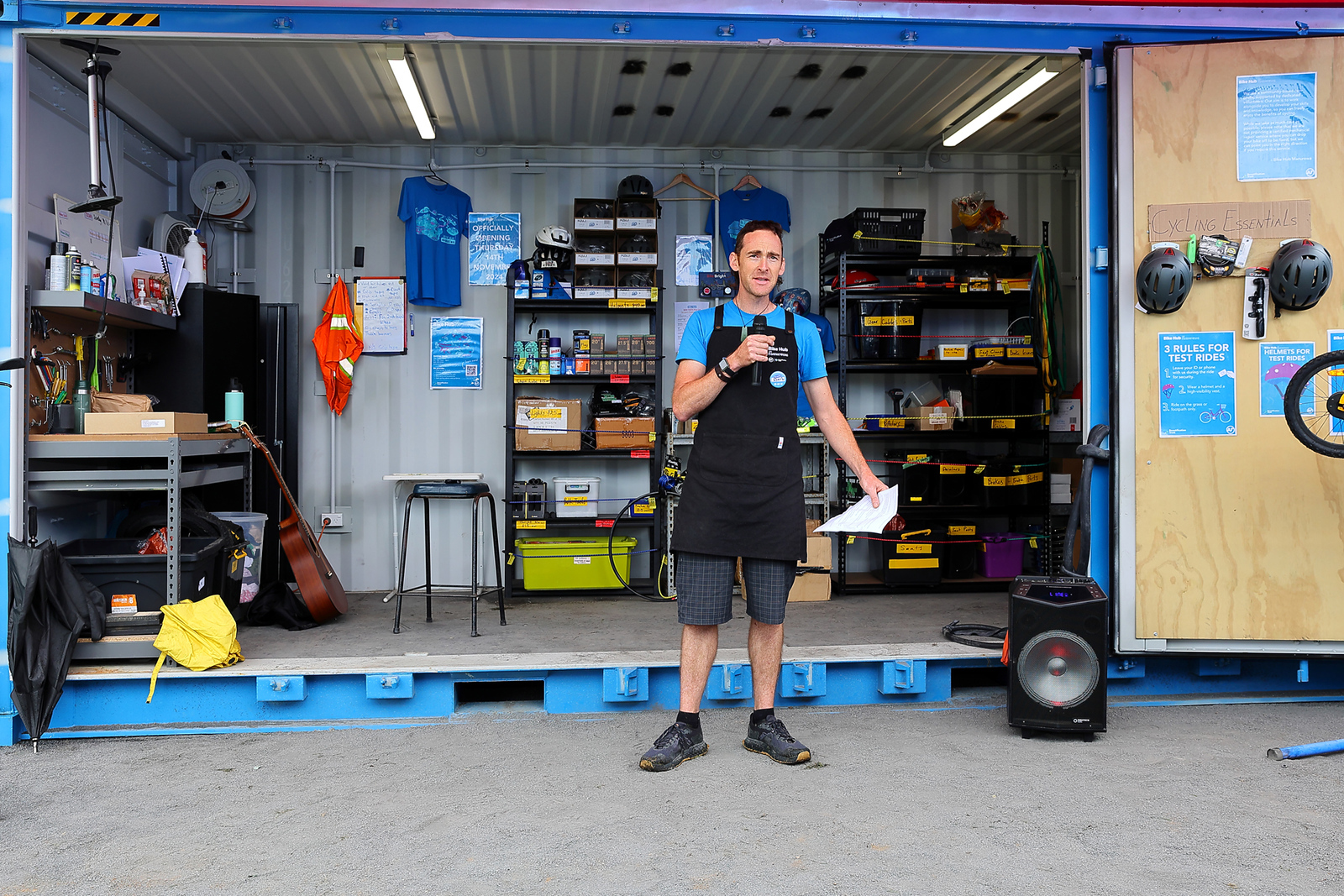![Quay Street:You could make a shared path here 6m wide - and it still wouldn't work well. [Copyright: Ed Kruger, CC-BY-SA-3.0-NZ]](https://www.bikeauckland.org.nz/wp-content/uploads/2014/11/Here-Shared-Paths-Dont-Work-I-176x3001.jpg)
But the insidiousness of the argument is that it leads to low-quality compromises like urban shared paths – which then perpetuate the “there are not enough cyclists to justify more cycleways” circular reasoning.
The reality is that cyclists are not like cars. But they aren’t like pedestrians either. To play to cycling’s strength, a cyclist needs to be able to go at a reasonable speed, at reasonable safety – and without constant conflict with other users. Shared paths risk creating an environment in which such conflicts – with pedestrians – are built right into the design. To be safe and courteous, cyclists need to go slower than appropriate for their mode of transport. Yet even if they do, both the pedestrians and the cyclists get a much degraded experience as a result, leading to frustration in one group, and push-back in the other.

Now if you go through CAA’s blog, you will note that we are actually supporting – cheering on, even – a variety of shared path projects. How does that square?
Well, shared paths CAN work – if pedestrian numbers are rather low for the shared path width. Really, if they are more like cycleways on which occasional pedestrians/joggers are also seen.
The causeway on the NW Cycleway and good sections of the future Glen Innes – Tamaki Path qualify. Distances are too long, and local attractions too sparse to attract crowds of walkers.
Other shared paths are a more of a mixed feast. For example, we would have loved the Waterview Shared Path in its suburban setting to be a separated facility – a dedicated footpath next to a dedicated cycleway. But our infrastructure culture still considers that unnecessary luxury, so we didn’t even push for that when the design was set down back in 2011. And further into town, from about Kingsland inwards, the Northwestern Cycleway is really starting to struggle with the combined pedestrian/cyclist numbers.
But the real issue is shared paths in urban locations, like the City Centre, or on major arterial roads like Maioro Street.
There, shared paths are simply a totally unsuitable solution – if you want cycling to grow. Urban shared paths may have an acceptable safety record. And they will attract the occasional new “cautiously interested” person to cycling – but as soon as that person is riding on the shared paths, he/she will soon feel all the frustrations of the footpath cyclist (and may be exposed to aggrieved pedestrians!).
For those environments, we need more Beach Roads (protected two-ways), and more Copenhagen Lanes (protected one-ways – we still don’t really have much of any of those around Auckland). Designs where pedestrians and cyclists both get a practical share of the road.

Urban shared paths are a great way to raise cycling’s mode share – from 1% to 2%. And then keeping it there, with a built-in ceiling. Better than nothing, but not much better.
So really, where alternatives are feasible but urban shared paths are proposed – for example to avoid car park removal by squashing cycleways and footpaths into one – sharing isn’t caring. It’s building inherently limited infrastructure.



